- লিঙ্ক পান
- X
- ইমেল
- অন্যান্য অ্যাপ
|
50 Grocery Store Tricks You Still Fall For ( courtecy;- reader;s digest ) |
|
Save money on groceries, stay healthy, and
beat supermarkets at their own game.
|
50 Supermarket Tricks You Still Fall For
Food experts, industry analysts, and store employees share their insider strategies on how to save money on groceries, stay healthy, and beat the supermarkets at their own game.
We’re very aware of the role that the senses play in marketing.
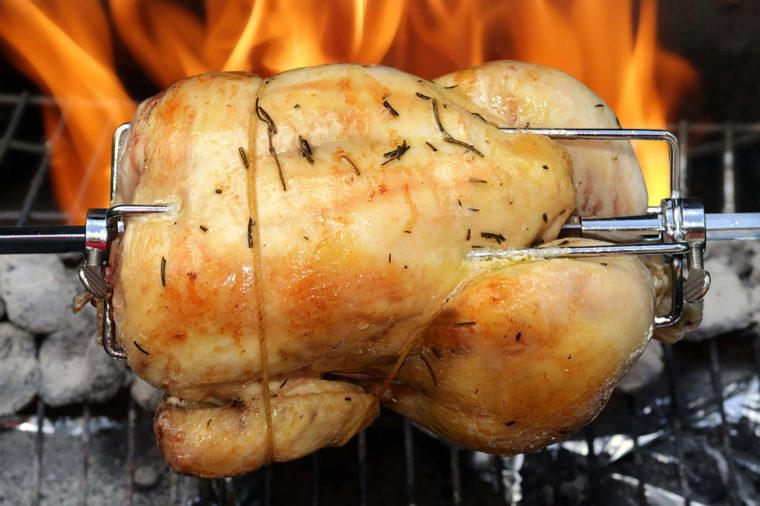 MICHAEL C. GRAY/SHUTTERSTOCK
MICHAEL C. GRAY/SHUTTERSTOCK
When you walk in the door, you smell bread baking or rotisserie chicken roasting in the deli area because we know those smells get your salivary glands working. When you’re salivating, you’re a much less disciplined shopper.
—Paco Underhill, consumer expert and author of What Women Want: The Science of Female Shopping
—Paco Underhill, consumer expert and author of What Women Want: The Science of Female Shopping
These are things that your grocer won't tell you.
It’s no accident that shopping carts are getting bigger.
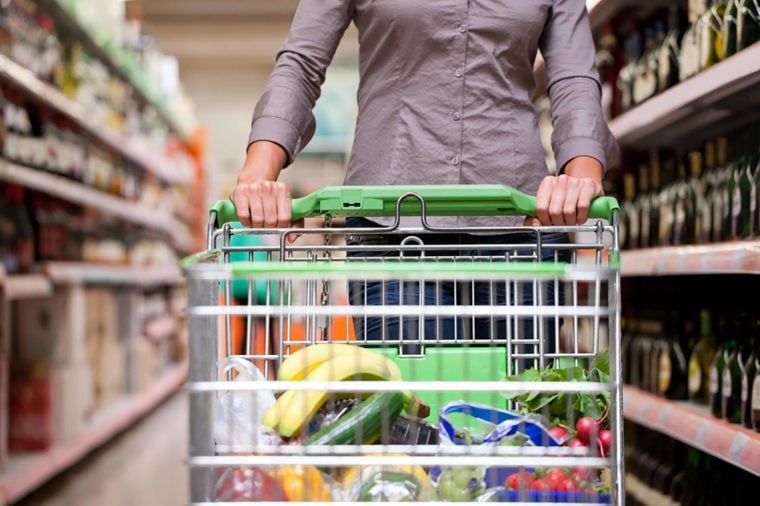 KZENON/SHUTTERSTOCKWe doubled their size as a test, and customers bought 19 percent more. —Martin Lindstrom, marketing consultant and author of Brandwashed: Tricks Companies Use to Manipulate Our Minds and Persuade Us to Buy
KZENON/SHUTTERSTOCKWe doubled their size as a test, and customers bought 19 percent more. —Martin Lindstrom, marketing consultant and author of Brandwashed: Tricks Companies Use to Manipulate Our Minds and Persuade Us to BuyThe more people buy, the more they consume.
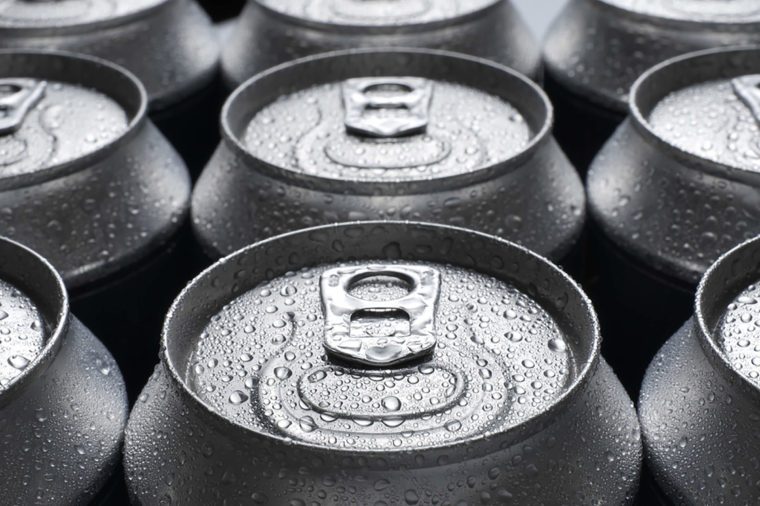 PEDROSALA/SHUTTERSTOCK
PEDROSALA/SHUTTERSTOCK
If you used to buy a six-pack of soda and drink six cans a week but now buy a 12-pack because that’s the current standard size, you’re probably going to start drinking 12 cans a week. Be mindful when buying larger sizes to make sure your habits don’t change as a result. —Jeff Weidauer, former supermarket executive and vice president of marketing for Vestcom, a retail services company
The average consumer tends to remember the price of only four items:
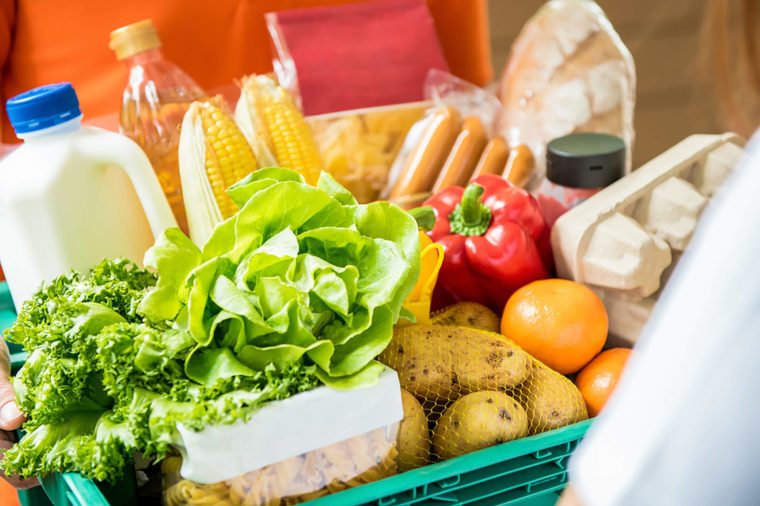 ATSTOCK-PRODUCTIONS/SHUTTERSTOCK
ATSTOCK-PRODUCTIONS/SHUTTERSTOCK
Milk, bread, bananas, and eggs. Ninety-five percent of shoppers have no idea what all the other items cost and don’t know if they’re getting a good deal when they buy them. —Martin Lindstrom
The produce department is at the front of the store because...
 RRRAINBOW/SHUTTERSTOCK
RRRAINBOW/SHUTTERSTOCK
its bright colors put you in a good mood and inspire you to buy more. That’s why I recommend that you start shopping in the middle of the store, with its bland boxes and cans. —Phil Lempert, grocery industry expert and editor of supermarketguru.com
Men and women do grocery shop differently, here's how.
Over 60 percent of shoppers off-load products as they check out.
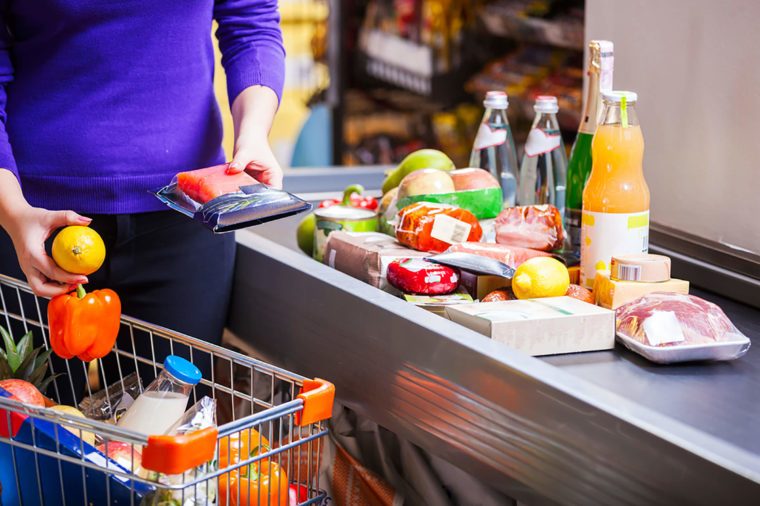 PHOTOBAC/SHUTTERSTOCKSo supermarkets started making checkout lanes narrower, with less shelf space, which means it’s harder to ditch goods at the last minute. —Martin Lindstrom
PHOTOBAC/SHUTTERSTOCKSo supermarkets started making checkout lanes narrower, with less shelf space, which means it’s harder to ditch goods at the last minute. —Martin LindstromWe let you linger … and it’s good for business.
 MARIA SAVENKO/SHUTTERSTOCK
MARIA SAVENKO/SHUTTERSTOCK
Customers would tell me as they went through the checkout, “I just stopped in to get eggs,” and they would have $250 worth of stuff. —Jason Swett, former bagger and cashier at a grocery store in Kalamazoo, Michigan
This is what you need to know before you start grocery shopping online.
To save money, wear headphones and listen to upbeat music as you shop.
 GAUDILAB/SHUTTERSTOCK
GAUDILAB/SHUTTERSTOCK
Many stores play music with a rhythm that’s much slower thn the average heartbeat, which makes you spend more time in the store—and buy 29 percent more. —Martin Lindstrom
CONTENT CONTINUES BELOW AD
Supermarkets aren’t out to steal from you.
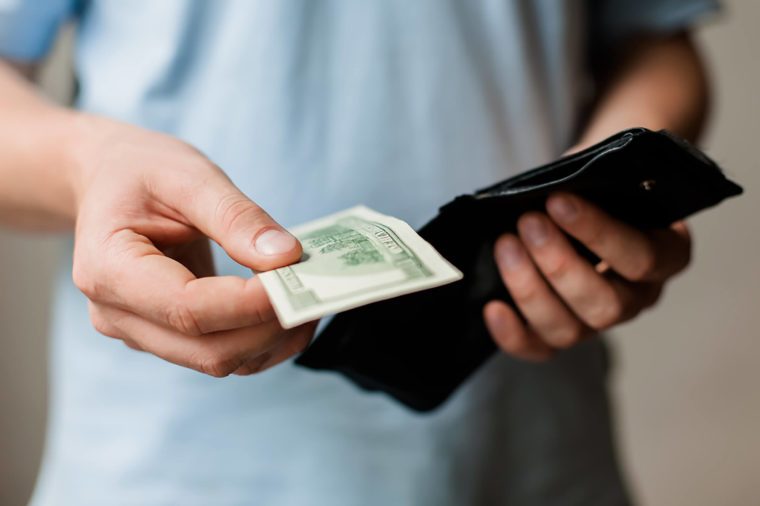 CHAMPION STUDIO/SHUTTERSTOCKThe average supermarket makes about 1.5 percent net profit a year. To give you some idea of how low that is, the profit margin for clothing stores can be several times that. —Phil Lempert
CHAMPION STUDIO/SHUTTERSTOCKThe average supermarket makes about 1.5 percent net profit a year. To give you some idea of how low that is, the profit margin for clothing stores can be several times that. —Phil LempertKroger uses heat sensors...
 LUNA VANDOORNE/SHUTTERSTOCK
LUNA VANDOORNE/SHUTTERSTOCK
...to track where people are in the store to determine when there’s likely to be a rush of shoppers to the checkout counters so that they can get cashiers to the front in advance. —Jeff Weidauer
Please have your money or credit card ready at checkout.
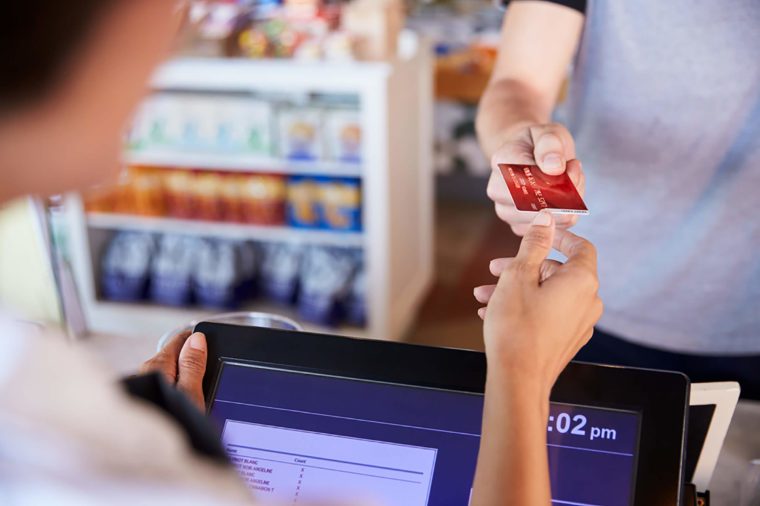 MONKEY BUSINESS IMAGES/SHUTTERSTOCK
MONKEY BUSINESS IMAGES/SHUTTERSTOCK
Some stores time each transaction. If you take too long, we get in trouble. —Aimee Brittain, former grocery cashier, prettyfrugaldiva.com
In my experience, food safety is the biggest priority...
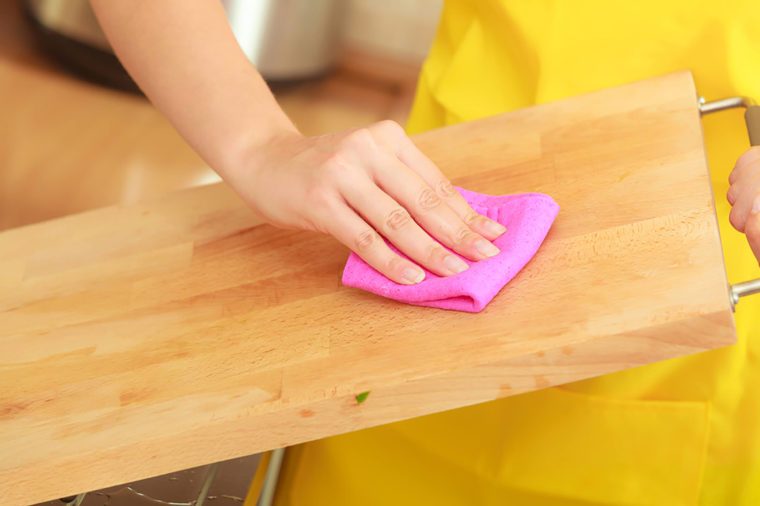 ANETLANDA/SHUTTERSTOCK...especially when it comes to produce. Employees were required to sterilize cutting boards every four hours; they had to fill out a cleaning log each time the boards were washed. Some employees would try to get out of doing the dirty work, so it was my job to pop into the department throughout the day and check the log. —Linda King, former store and department manager for a Connecticut chain
ANETLANDA/SHUTTERSTOCK...especially when it comes to produce. Employees were required to sterilize cutting boards every four hours; they had to fill out a cleaning log each time the boards were washed. Some employees would try to get out of doing the dirty work, so it was my job to pop into the department throughout the day and check the log. —Linda King, former store and department manager for a Connecticut chainOne thing that shocked me...
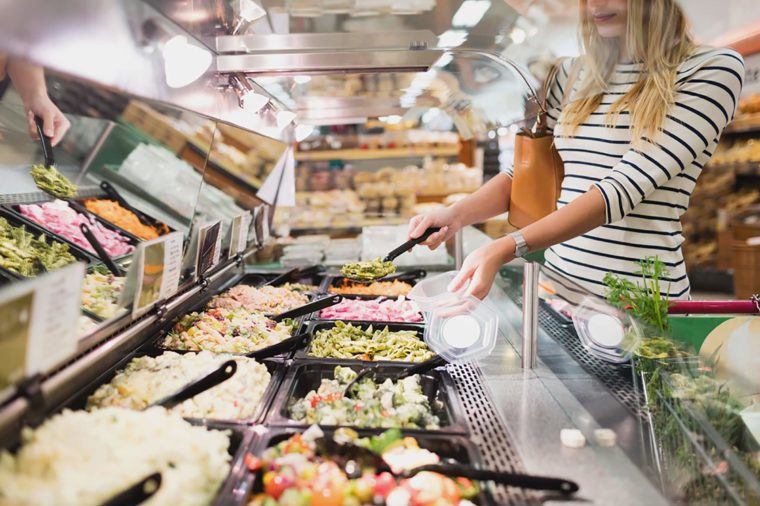 WAVEBREAKMEDIA/SHUTTERSTOCK
WAVEBREAKMEDIA/SHUTTERSTOCK
...is that prepared food in the deli area, like chicken or potatoes, is thrown away at the end of the day. Stores can’t save it. They won’t even give it to their employees. —Aimee Brittain
These are the unhealthiest foods you can buy at the supermarket.
Grocery stores can’t compete with Walmart on price.
 PHOTOGRAPHYFIRM/SHUTTERSTOCK
PHOTOGRAPHYFIRM/SHUTTERSTOCK
So what are they doing? Bringing in people who are passionate about food. They’re hiring butchers who are skilled at cutting up meat, produce managers who are experts on fruits and vegetables, and a few dietitians who give seminars on healthy eating habits. —Jeff Weidauer
Most grocery stores have a budget for supporting local causes...
 DRAGON IMAGES/SHUTTERSTOCK...and are interested in being a part of the community. So if your school is having a fund-raiser, don’t forget to talk to your nearby store. —Jeff Weidauer
DRAGON IMAGES/SHUTTERSTOCK...and are interested in being a part of the community. So if your school is having a fund-raiser, don’t forget to talk to your nearby store. —Jeff WeidauerYou can’t win when you’re a bagger.
 SEAN LOCKE PHOTOGRAPHY/SHUTTERSTOCK
SEAN LOCKE PHOTOGRAPHY/SHUTTERSTOCK
If you put a loaf of bread in a bag by itself, some people get mad because they want it with their other groceries. But other customers get mad if you don’t put the bread in a
separate bag. —Jason Swett
People believe milk is located in the back of the store...
.
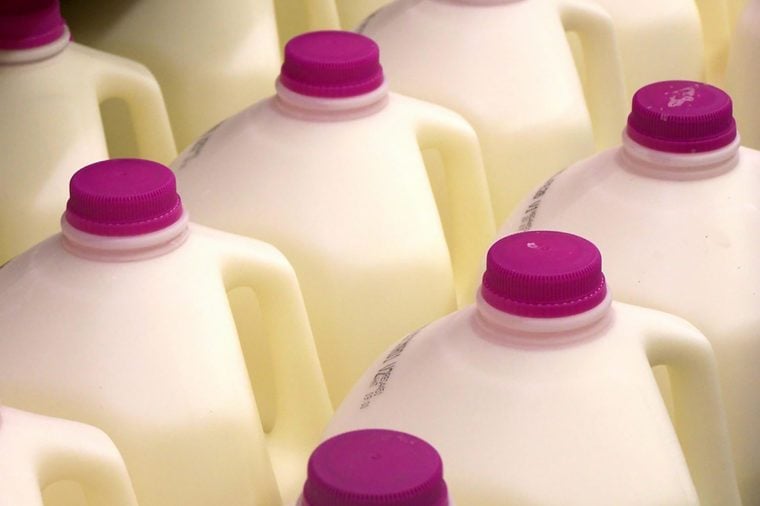 RON HILTON/SHUTTERSTOCK
RON HILTON/SHUTTERSTOCK
..so that they have to walk through the aisles to get to it. But the real reason is simple logistics. Milk needs to be refrigerated right away; the trucks unload in the back, so the fridges are there so that we can fill the cases as quickly and easily as possible. —Jeff Weidauer
About 80 percent of what shoppers buy, they buy every week.
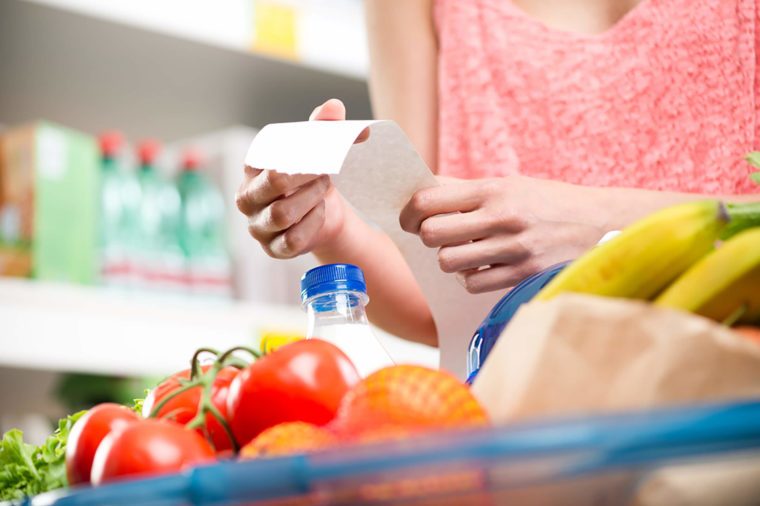 STOKKETE/SHUTTERSTOCKKeep your receipt, which shows the item and the price you last paid, so you can tell when something is on sale. That’s when you should stock up. —Phil Lempert
STOKKETE/SHUTTERSTOCKKeep your receipt, which shows the item and the price you last paid, so you can tell when something is on sale. That’s when you should stock up. —Phil LempertIf you need a cake, don’t buy it the day you need it.
 DENISS GRIGORJEVS/SHUTTERSTOCK
DENISS GRIGORJEVS/SHUTTERSTOCK
We’ll have to give you one from the display case, and those cakes have often been sitting out for a while. If you order in advance, we’ll make the cake for you that day or the night before, and it will be a lot fresher. —Lindsay Smith, former cake decorator and bakery worker at a grocery store near Birmingham, Alabama
Believe it or not...
 DAVID PHILIPS/SHUTTERSTOCK
DAVID PHILIPS/SHUTTERSTOCK
...my years of research have found that the average apple you see in the supermarket is 14 months old…or older. —Martin Lindstrom
These are the healthiest foods you can buy at the supermarket.
Some of the same cheeses displayed behind the deli counter...
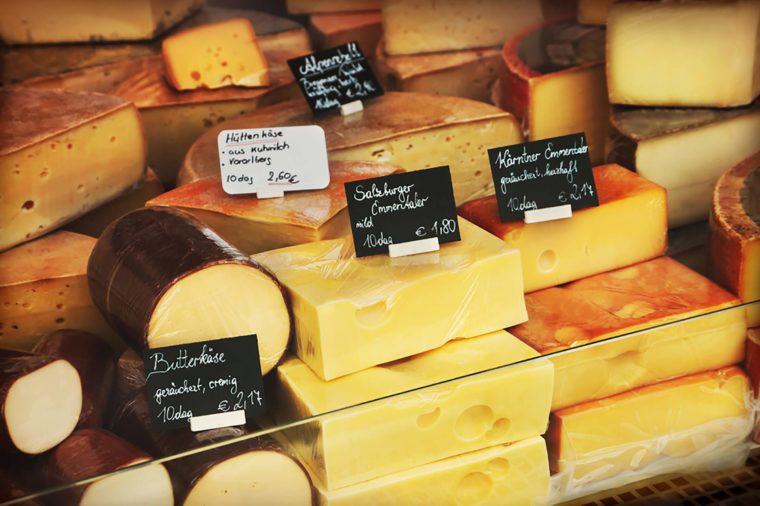 ADISA/SHUTTERSTOCK...are available in the dairy case. The packaging isn’t as fancy, but they’re much cheaper. —Phil Lempert
ADISA/SHUTTERSTOCK...are available in the dairy case. The packaging isn’t as fancy, but they’re much cheaper. —Phil LempertThe mist that’s sprayed on your fruits and veggies...
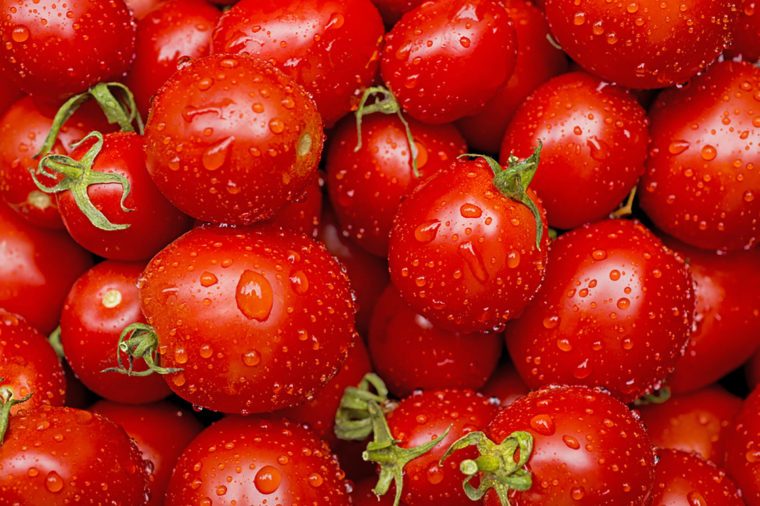 SERHII YUSHKOV/SHUTTERSTOCK
SERHII YUSHKOV/SHUTTERSTOCK
...may make them look fresh, but it can make them rot faster. The water also adds to an item’s weight, so make sure you shake off leafy greens. —Martin Lindstrom
We recycle the vegetables and fruits that don’t sell in time...
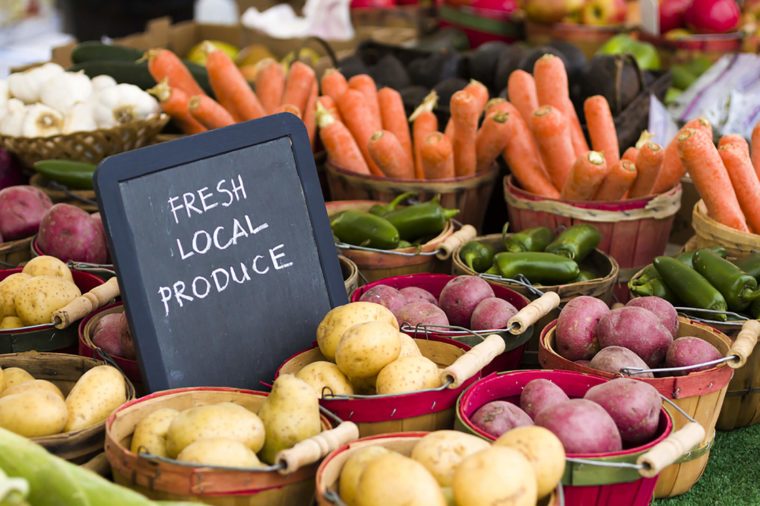 ARINA P HABICH/SHUTTERSTOCK
ARINA P HABICH/SHUTTERSTOCK
...by using them in our prepared foods. —Bradley McHugh
In a supermarket, a good sale is anything that’s half price.
 TREKANDSHOOT/SHUTTERSTOCK“Buy one, get the second one 50 percent off” discounts are not good sales—that’s only 25 percent off each. Almost everything is reduced to 50 percent at some point. —Teri Gault
TREKANDSHOOT/SHUTTERSTOCK“Buy one, get the second one 50 percent off” discounts are not good sales—that’s only 25 percent off each. Almost everything is reduced to 50 percent at some point. —Teri Gault
You're better off making these overpriced grocery store items at home.
The store I worked at would make some of its sales very specific...
 ORDINARY CITIZEN/SHUTTERSTOCK
ORDINARY CITIZEN/SHUTTERSTOCK
...and, in my opinion, very deceptive. For example, it would offer 50 percent off a ten-ounce package of deli ham and put the sign right between the ten-ounce packages and the 16-ounce ones. Shoppers would wind up grabbing the wrong one and paying full price. —Jason Swett
Customers think that when they buy in bulk, they end up with a better deal.
 GONCHAROV ARTEM/SHUTTERSTOCK
GONCHAROV ARTEM/SHUTTERSTOCK
But that’s not always the case. In the produce department, individual peppers are almost always cheaper than those in the multi-packs, and loose avocados are usually cheaper than the ones grouped in mesh bags. —Teri Gault
The ten-for-$10 promotion is one of the most effective.
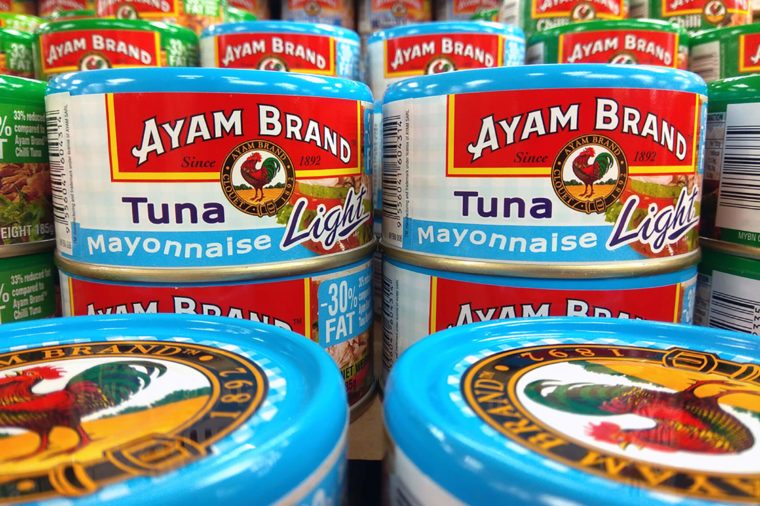 TY LIM/SHUTTERSTOCKWhen a store does it, volume takes off, even if the promotion raises the price of something. We’ll take an 89-cent can of tuna and mark it “ten for $10,”
and instead of buying six cans for 89 cents, people will buy ten for $10. —Jeff Weidauer
TY LIM/SHUTTERSTOCKWhen a store does it, volume takes off, even if the promotion raises the price of something. We’ll take an 89-cent can of tuna and mark it “ten for $10,”
and instead of buying six cans for 89 cents, people will buy ten for $10. —Jeff WeidauerDo not assume...
 06PHOTO/SHUTTERSTOCK
06PHOTO/SHUTTERSTOCK
...that if something is displayed at the end of an aisle, it is a good deal. Often, it’s not. Those endcaps are sold specifically to companies trying to promote a product. —Paco Underhill
Just because something is advertised in your grocery store circular...
 MONKEY BUSINESS IMAGES/SHUTTERSTOCK
MONKEY BUSINESS IMAGES/SHUTTERSTOCK
...doesn’t mean it’s on sale. There’s a whole lot in there that’s full price. —Teri Gault
This is what nutritionists always do at the grocery store, so you should too.
Grocery stores usually don’t have the best milk prices.
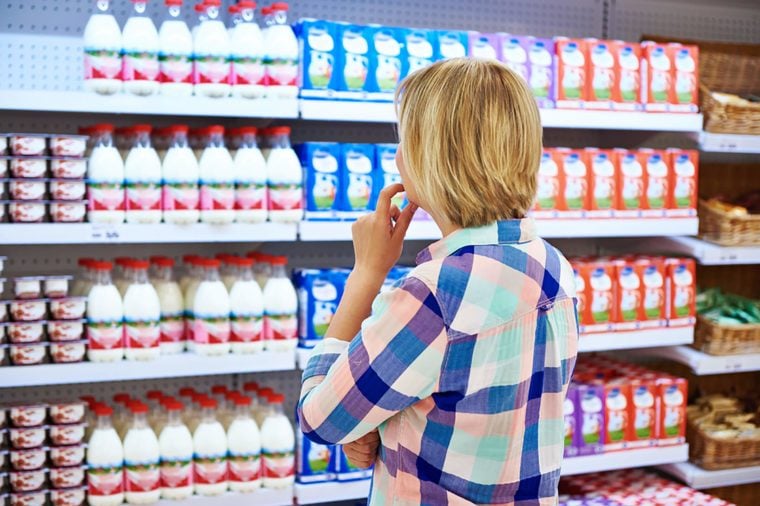 SERGEY RYZHOV/SHUTTERSTOCKThe milk at drugstores and convenience stores is typically priced 30 to 50 cents less per gallon; it may even be locally produced and hormone-free. —Teri Gault
SERGEY RYZHOV/SHUTTERSTOCKThe milk at drugstores and convenience stores is typically priced 30 to 50 cents less per gallon; it may even be locally produced and hormone-free. —Teri GaultDo you like the hot pizza from the deli?
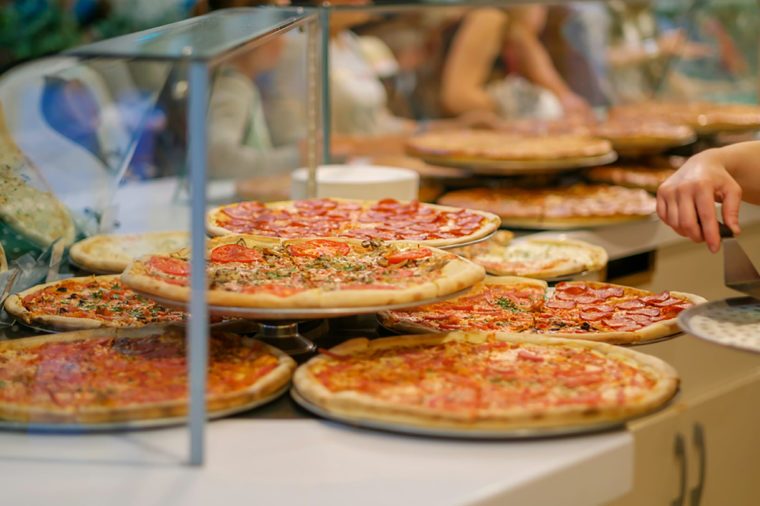 ANDREY BURKOV/SHUTTERSTOCK
ANDREY BURKOV/SHUTTERSTOCK
It’s likely the same store-brand pizza offered over in the freezer section for almost half the price per slice. —Bradley McHugh, meat manager and deli clerk for an independent grocery store in Ohio
At the fresh seafood counter...
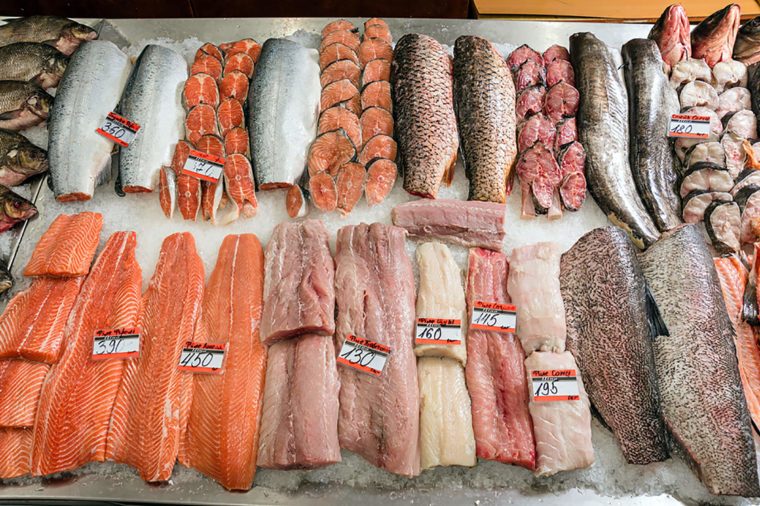 ROMAN PYSHCHYK/SHUTTERSTOCK
ROMAN PYSHCHYK/SHUTTERSTOCK
...most products are labeled previously frozen in small type. Those same products are probably for sale in the frozen-food case for 40 percent less. Not only that, but you won’t have to use them right away, since they haven’t been thawed out. —Phil Lempert
This is the real reason that grocery stores mist their produce.
I’ve tasted every item in our deli case...
 U.J. ALEXANDER/SHUTTERSTOCK...and there’s very little difference between what’s been prepackaged and what we slice fresh. A lot of times, it’s the exact same product. But you’re paying $1 to $2 more per pound for the same product just to have us slice it for you. —Bradley McHugh
U.J. ALEXANDER/SHUTTERSTOCK...and there’s very little difference between what’s been prepackaged and what we slice fresh. A lot of times, it’s the exact same product. But you’re paying $1 to $2 more per pound for the same product just to have us slice it for you. —Bradley McHughWhen you buy fresh bread...
 WAVEBREAKMEDIA/SHUTTERSTOCK
WAVEBREAKMEDIA/SHUTTERSTOCK
...we give it to you in a brown paper bag. Why? Because the bread may go stale faster, sending you back to the store to buy more. A quick fix: Place loaves in airtight plastic bags as soon as you get home. —Lindsay Smith
Our French bread was exactly the same as our Italian bread...
 JANNA GOLOVACHEVA/SHUTTERSTOCK
JANNA GOLOVACHEVA/SHUTTERSTOCK
...which was the same as our White Mountain bread. They were all made with the same dough and then shaped differently. —Lindsay Smith
You'll want to shop at this new online grocery store where everything is $3.
If we’re having a sale on a baked item...
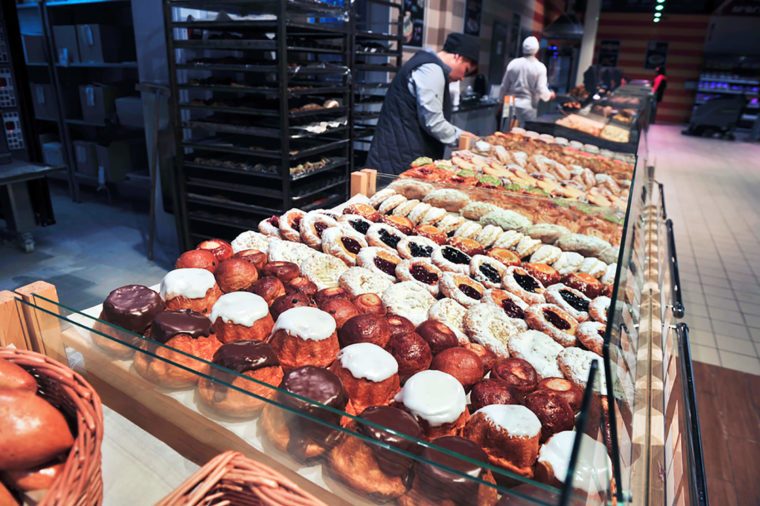 VIPAVLENKOFF/SHUTTERSTOCK...and you don’t need it until the next month, ask if you can buy it now, during the sale, but not pick it up until your event. We let people do that all the time. They bring back their receipt a month later and get their order. —A cake decorator in an Ohio grocery store
VIPAVLENKOFF/SHUTTERSTOCK...and you don’t need it until the next month, ask if you can buy it now, during the sale, but not pick it up until your event. We let people do that all the time. They bring back their receipt a month later and get their order. —A cake decorator in an Ohio grocery store
D
If you see something in the bakery...
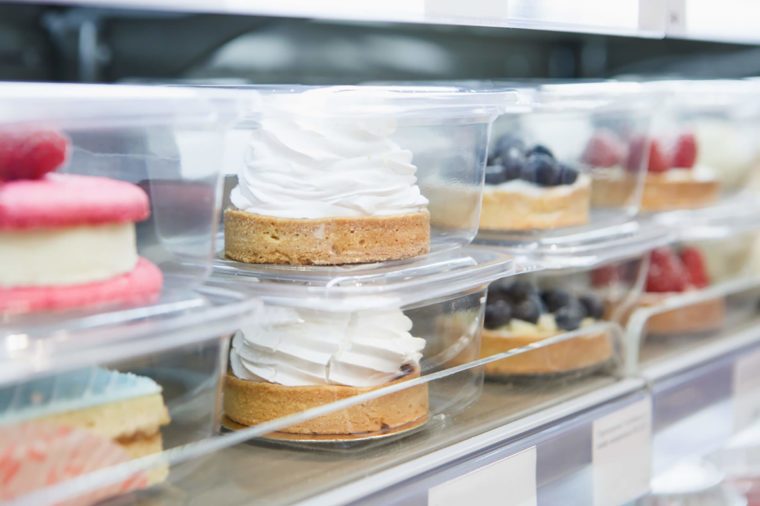 HURRICANEHANK/SHUTTERSTOCK
HURRICANEHANK/SHUTTERSTOCK
...or meat department that will expire the next day, say, “Hey, this is expiring tomorrow. Are you going to mark it down?” A lot of times, they’ll mark it down for you right then. You’re really doing them a favor, since they have to unload it anyway. —Teri Gault
There’s a lot that grocery store employees will do for you if you just ask.
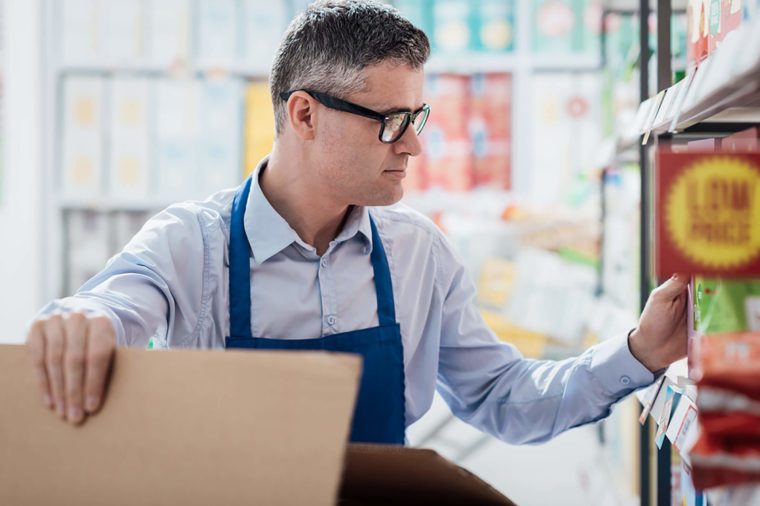 STOKKETE/SHUTTERSTOCK
STOKKETE/SHUTTERSTOCK
The butcher will tenderize meat for you, the baker will slice a loaf of bread, and the florist will usually give you free greenery to go with your loose flowers. At some stores owned by Kroger, the seafood department worker will even coat your fish in flour or Cajun seasoning and fry it up for free. I couldn’t believe it the first time they did that for me. —Teri Gault, grocery savings expert and CEO of thegrocerygame.com
Is there a product you want that the store doesn’t carry?
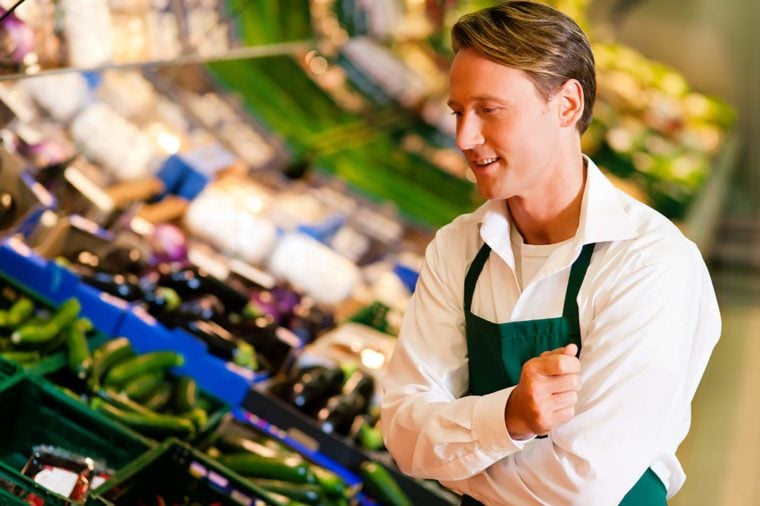 KZENON/SHUTTERSTOCKTalk to the manager. A lot of today’s supermarkets will special-order things for you. They’ll even arrange to bring something in for you on a regular basis. —Jeff Weidauer
KZENON/SHUTTERSTOCKTalk to the manager. A lot of today’s supermarkets will special-order things for you. They’ll even arrange to bring something in for you on a regular basis. —Jeff WeidauerIf you can, shop when the store is not busy.
 SYDA PRODUCTIONS/SHUTTERSTOCK
SYDA PRODUCTIONS/SHUTTERSTOCK
Studies show that most consumers buy more when the store is crowded because they
subconsciously want to be part of the group. Mondays and Tuesdays are the best days to shop. Whatever you do, avoid weekends. —Phil Lempert
It’s almost always cheaper to buy a large cut and have us trim it for you.
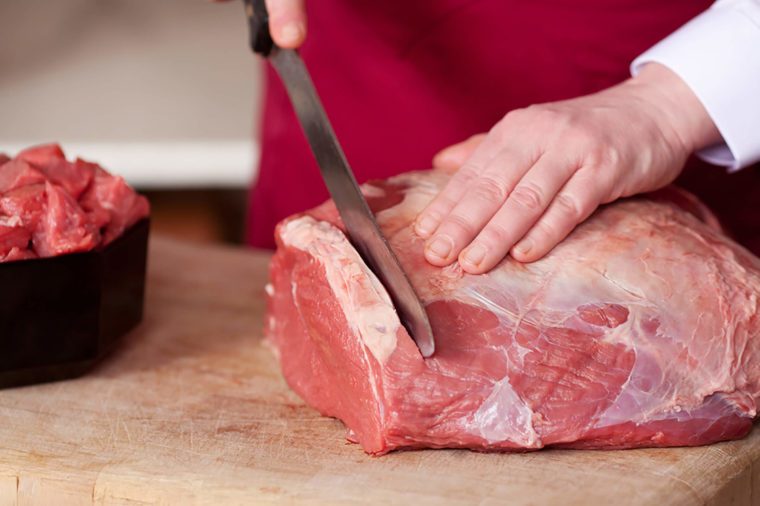 ESB PROFESSIONAL/SHUTTERSTOCK
ESB PROFESSIONAL/SHUTTERSTOCK
We can cut a chuck roast into stew cubes, a whole boneless strip loin into New York strip steaks, or a flank steak into stir-fry strips. We’ve had people buy one big roast and have us remove the bone for soup, run half of it through the grinder for hamburger, and cut the rest into a pot roast. That can save you about 30 percent compared with buying everything cut. —Bradley McHugh
You should never purchase these 9 items in bulk.
Just because a cut of meat is labeled Angus doesn’t mean it’s going to be a great steak.
 VITAHIMA/SHUTTERSTOCKWhat you really want to check is its USDA quality grade. Prime is the best, then choice (usually the highest grade available in grocery stores), followed by select, and finally standard. —Kari Underly, former grocery store meat cutter and author of The Art of Beef Cutting: A Meat Professional’s Guide to Butchering and Merchandising
VITAHIMA/SHUTTERSTOCKWhat you really want to check is its USDA quality grade. Prime is the best, then choice (usually the highest grade available in grocery stores), followed by select, and finally standard. —Kari Underly, former grocery store meat cutter and author of The Art of Beef Cutting: A Meat Professional’s Guide to Butchering and MerchandisingFind out when your butcher marks down meat.
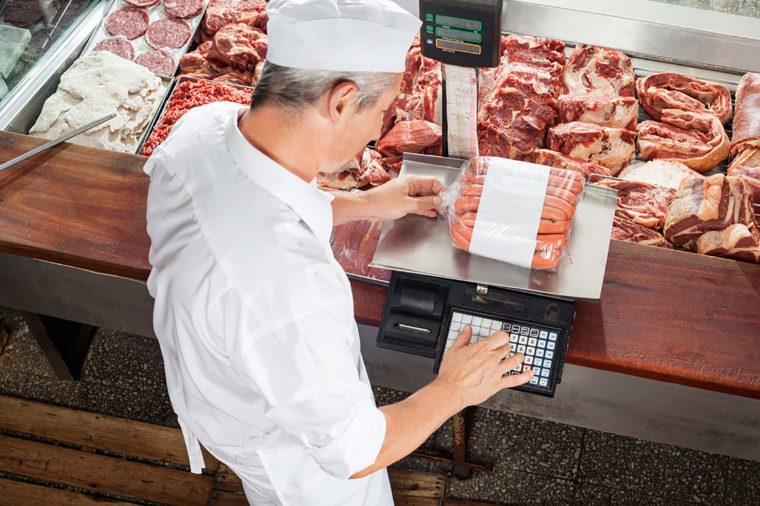 TYLER OLSON/SHUTTERSTOCK
TYLER OLSON/SHUTTERSTOCK
At most stores, it’s between eight and ten in the morning. —Teri Gault
One of our best-kept secrets...
 BRENT HOFACKER/SHUTTERSTOCK
BRENT HOFACKER/SHUTTERSTOCK
...is that you get filet mignon much cheaper by buying whole T-bone steaks. Every T-bone has a small filet mignon on the bone, and a New York strip on the opposite side. The price difference can be $3 to $5 a pound. —Bradley McHugh
If you’re worried about what’s in your ground meat...
 HACOHOB/SHUTTERSTOCK...buy a piece of roast when it’s on sale and have your butcher grind it up for you in-store. A sirloin roast would be so delicious as hamburger. —Kari Underly
HACOHOB/SHUTTERSTOCK...buy a piece of roast when it’s on sale and have your butcher grind it up for you in-store. A sirloin roast would be so delicious as hamburger. —Kari UnderlyWhen I was training as a health inspector...
 ABOIKIS/SHUTTERSTOCK
ABOIKIS/SHUTTERSTOCK
...the instructors beat into our heads how to inspect restaurants. But there was very little training focused on grocery stores. They took us through a grocery store in one day and then turned us loose, even though the stores have all this processing equipment that’s tough to clean. And I have to admit, I’d look at some of these machines on my inspections and say, “Yep, looks good.” But I didn’t really know what I was looking for. —Grocery store public health consultant
When you buy prepackaged ground meat in one of those tubes or foam containers...
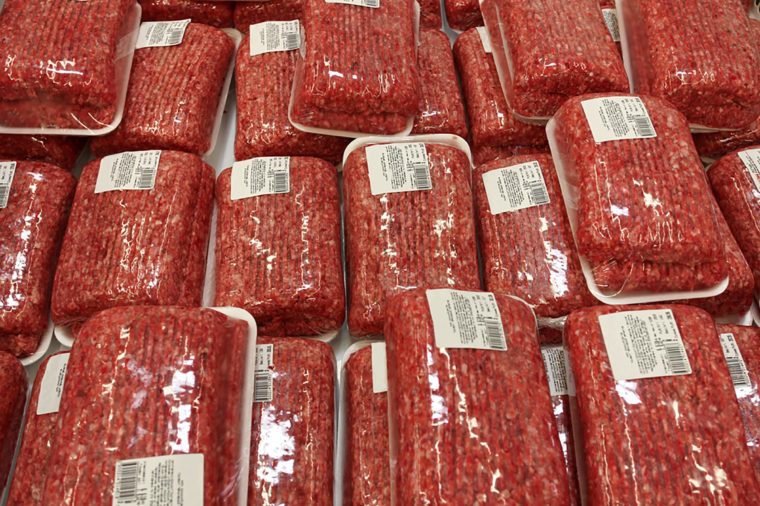 MRIVSERG/SHUTTERSTOCK
MRIVSERG/SHUTTERSTOCK
...it may have come from hundreds of cows. If just one of those cows had E. coli on its hide, it’s now in your hamburger. If you ask a grocery store meat cutter to grind your hamburger in the store, it’s coming from just one cow. There’s still a risk of contamination, but it’s a much lower one. —Bill Marler, food-safety advocate and Seattle attorney who has frequently sued food companies
Everyone handles the produce.
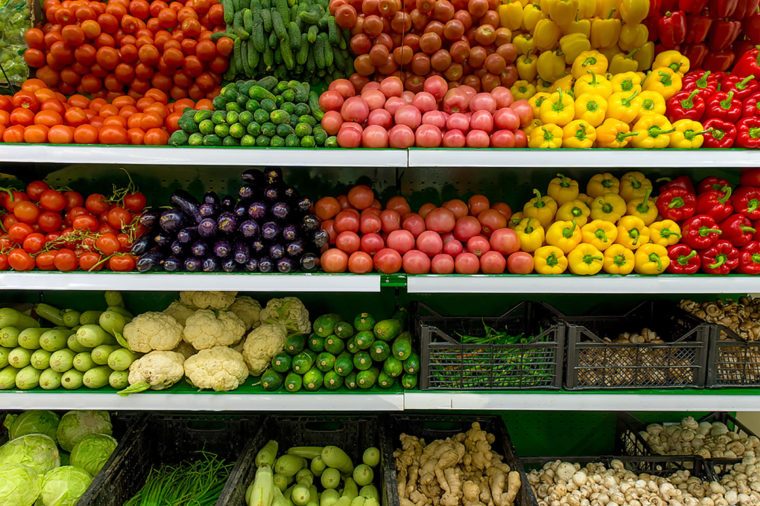 IRINA SOKOLOVSKAYA/SHUTTERSTOCKI’ve seen customers drop something, pick it up, and put it back on the shelf. I’ve seen kids take a bite and put the item back. It took me a long time to start eating fresh fruits and vegetables again after working in a store. —Aimee Brittain
IRINA SOKOLOVSKAYA/SHUTTERSTOCKI’ve seen customers drop something, pick it up, and put it back on the shelf. I’ve seen kids take a bite and put the item back. It took me a long time to start eating fresh fruits and vegetables again after working in a store. —Aimee Brittain
CONTENT CONTINUES BELOW AD
In almost every store we walk into...
 TAVIPHOTO/SHUTTERSTOCK...the employees tell us they don’t have enough time to clean properly. The result: I’ve seen some mice infestations so bad that they were living in the dairy cooler. —Grocery store public health consultant
TAVIPHOTO/SHUTTERSTOCK...the employees tell us they don’t have enough time to clean properly. The result: I’ve seen some mice infestations so bad that they were living in the dairy cooler. —Grocery store public health consultantThe carts never get cleaned.
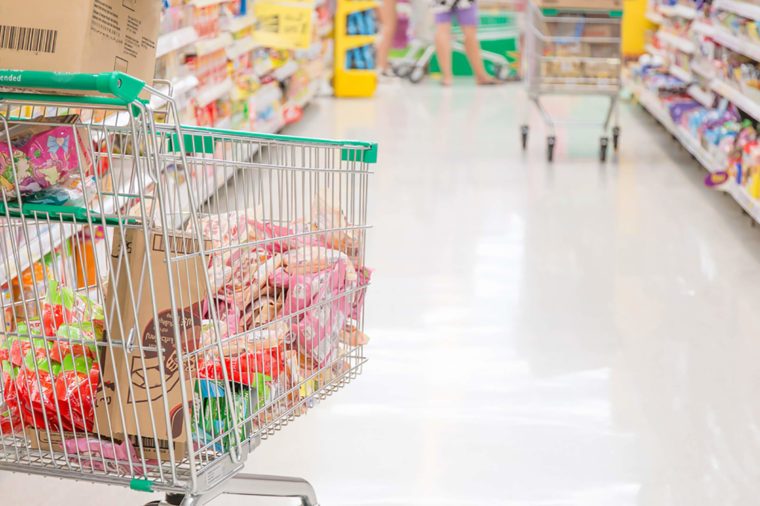 PANITANPHOTO/SHUTTERSTOCK
PANITANPHOTO/SHUTTERSTOCK
I’ve seen babies soiling carts and carts with chicken juice leaking on them. That’s why I give them a once-over with my own sanitizing wipes. —Aimee Brittain
- লিঙ্ক পান
- X
- ইমেল
- অন্যান্য অ্যাপ
মন্তব্যসমূহ
একটি মন্তব্য পোস্ট করুন